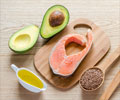Food Chem
Phytosterols extraction from hickory (Carya cathayensis Sarg.) husk with a green direct citric acid hydrolysis extraction method.
Feng S, Wang L, Belwal T, Li L, Luo Z
This study investigated the direct citric acid hydrolysis extraction method to optimize phytosterols extraction from hickory husk. Single factor exper ...
Read More
Source: PubMed
Data Brief
Dataset on the phytochemicals, antioxidants, and minerals contents of pecan nut cake extracts obtained by ultrasound-assisted extraction coupled to a simplex-centroid design.
Maciel LG, Teixeira GL, Block JM
This article contains a dataset related to the research published in "The potential of the pecan nut cake as an ingredient for the food industry" [1]. ...
Read More
Source: PubMed
Environ. Entomol. 2020 Jan 08
Cerambycid Communities and Their Associated Hymenopteran Parasitoids From Major Hardwood Trees in Delaware: Implications for Biocontrol of Invasive Longhorned Beetles.
Golec JR, Aparicio E, Wang X, Duan JJ, Fuester RW, Tatman D, Kula RR
Cerambycidae provide important ecological services in forests yet cause economic damage when they infest living trees. Parasitoids can regulate woodbo ...
Read More
Source: PubMed
Biomolecules
In Vitro Antioxidant Activity Optimization of Nut Shell (Carya illinoinensis) by Extrusion Using Response Surface Methods.
Villasante J, Pérez-Carrillo E, Heredia-Olea E, Metón I, Almajano MP
The pecan (Carya illinoinensis) nut shell is an important byproduct of the food processing industry that has not been previously explored as an antiox ...
Read More
Source: PubMed
Food Res. Int.
The potential of the pecan nut cake as an ingredient for the food industry.
Maciel LG, Ribeiro FL, Teixeira GL, Molognoni L, Nascimento Dos Santos J, Larroza Nunes I, Mara Block J
Pecan nut [Carya illinoinensis (Wangenh.) K. Koch] cake (PNC) is a co-product from the oil extraction industry and its potential as an ingredient for ...
Read More
Source: PubMed
Food Chem
Phytosterols extraction from hickory (Carya cathayensis Sarg.) husk with a green direct citric acid hydrolysis extraction method.
Feng S, Wang L, Belwal T, Li L, Luo Z
This study investigated the direct citric acid hydrolysis extraction method to optimize phytosterols extraction from hickory husk. Single factor exper ...
Read More
Source: PubMed
Data Brief
Dataset on the phytochemicals, antioxidants, and minerals contents of pecan nut cake extracts obtained by ultrasound-assisted extraction coupled to a simplex-centroid design.
Maciel LG, Teixeira GL, Block JM
This article contains a dataset related to the research published in "The potential of the pecan nut cake as an ingredient for the food industry" [1]. ...
Read More
Source: PubMed
Environ. Entomol. 2020 Jan 08
Cerambycid Communities and Their Associated Hymenopteran Parasitoids From Major Hardwood Trees in Delaware: Implications for Biocontrol of Invasive Longhorned Beetles.
Golec JR, Aparicio E, Wang X, Duan JJ, Fuester RW, Tatman D, Kula RR
Cerambycidae provide important ecological services in forests yet cause economic damage when they infest living trees. Parasitoids can regulate woodbo ...
Read More
Source: PubMed
Biomolecules
In Vitro Antioxidant Activity Optimization of Nut Shell (Carya illinoinensis) by Extrusion Using Response Surface Methods.
Villasante J, Pérez-Carrillo E, Heredia-Olea E, Metón I, Almajano MP
The pecan (Carya illinoinensis) nut shell is an important byproduct of the food processing industry that has not been previously explored as an antiox ...
Read More
Source: PubMed
Food Res. Int.
The potential of the pecan nut cake as an ingredient for the food industry.
Maciel LG, Ribeiro FL, Teixeira GL, Molognoni L, Nascimento Dos Santos J, Larroza Nunes I, Mara Block J
Pecan nut [Carya illinoinensis (Wangenh.) K. Koch] cake (PNC) is a co-product from the oil extraction industry and its potential as an ingredient for ...
Read More
Source: PubMed
Food Chem
Phytosterols extraction from hickory (Carya cathayensis Sarg.) husk with a green direct citric acid hydrolysis extraction method.
Feng S, Wang L, Belwal T, Li L, Luo Z
This study investigated the direct citric acid hydrolysis extraction method to optimize phytosterols extraction from hickory husk. Single factor exper ...
Read More
Source: PubMed
Data Brief
Dataset on the phytochemicals, antioxidants, and minerals contents of pecan nut cake extracts obtained by ultrasound-assisted extraction coupled to a simplex-centroid design.
Maciel LG, Teixeira GL, Block JM
This article contains a dataset related to the research published in "The potential of the pecan nut cake as an ingredient for the food industry" [1]. ...
Read More
Source: PubMed
Environ. Entomol. 2020 Jan 08
Cerambycid Communities and Their Associated Hymenopteran Parasitoids From Major Hardwood Trees in Delaware: Implications for Biocontrol of Invasive Longhorned Beetles.
Golec JR, Aparicio E, Wang X, Duan JJ, Fuester RW, Tatman D, Kula RR
Cerambycidae provide important ecological services in forests yet cause economic damage when they infest living trees. Parasitoids can regulate woodbo ...
Read More
Source: PubMed
Biomolecules
In Vitro Antioxidant Activity Optimization of Nut Shell (Carya illinoinensis) by Extrusion Using Response Surface Methods.
Villasante J, Pérez-Carrillo E, Heredia-Olea E, Metón I, Almajano MP
The pecan (Carya illinoinensis) nut shell is an important byproduct of the food processing industry that has not been previously explored as an antiox ...
Read More
Source: PubMed
Food Res. Int.
The potential of the pecan nut cake as an ingredient for the food industry.
Maciel LG, Ribeiro FL, Teixeira GL, Molognoni L, Nascimento Dos Santos J, Larroza Nunes I, Mara Block J
Pecan nut [Carya illinoinensis (Wangenh.) K. Koch] cake (PNC) is a co-product from the oil extraction industry and its potential as an ingredient for ...
Read More
Source: PubMed







